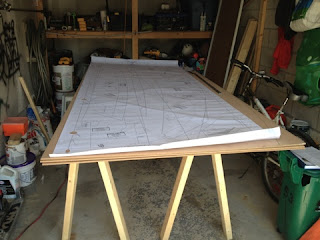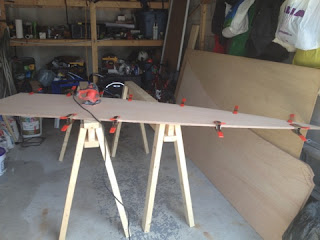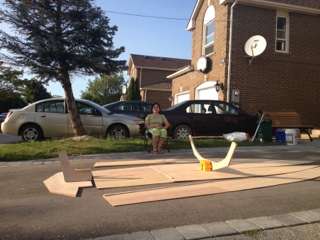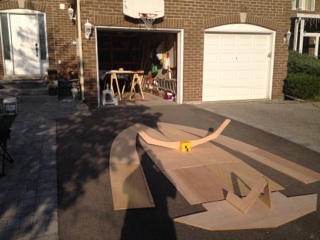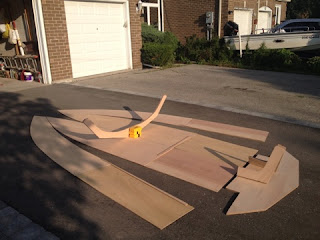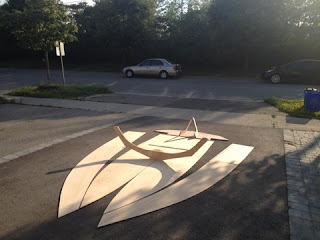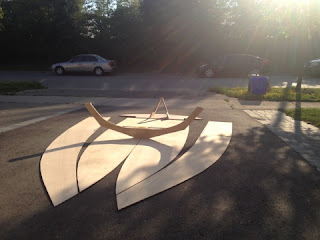Once this step is completed, I want to cover the boat's exterior with Petite Red Mahogany sealer, sand it and apply a layer of epoxy on top of it followed by applying the fiberglass before finishing with 5-6 coats of varnish.
Basically I want to give it a uniform color before applying the fiberglass.
Have considered double-planking if the finish will not be good enough, but this involves the build of several frames inside the boat to support the planking weight.
Tested on a small area after the first holes filling and sanding. The darker area on the right shows the epoxy underneath that has not been sanded.
Oct 23rd, 2015: Sanded all the boat to remove epoxy. Boat is now ready for filling only a few areas for the second time.
Advice: Sand all the boat nicely, eliminating the epoxy layer if you have one.
Will continue with the project in the spring of 2016.





